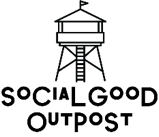The Top Three Ways To Ethically & Sustainably Transform The Fashion Industry
Across Australia, a tidal wave of change has been coming to the fashion industry. For all us eco-conscious, ethical consumers and do-gooders out there, it’s rather ironic that turning our eyes to the ethics and sustainability of the fashion industry has come so late, really. I say this, because, did you know that you shed roughly 1900 microplastic fibres each time you wash a synthetic fabric (like polyester or nylon) in the washing machine?
Or that if your jeans cost under AUD$100 there has likely been slavery in the supply chain? In fact, did you know that the world today has the highest number of slaves it has ever had in history, and that many of them are in the fashion industry?
Through this series, we’re seeking to bring you the freshest insights and coverage of the Youth Entrepreneurs & Leaders Speaker Series, an initiative funded and supported by the Australian Government, curated and designed by Australian social enterprise Social Good Outpost.
Furthermore, as Brittanie Dreghorn, of Brisbane-based Britt’s List and our keynote speaker recently stated, fashion is a feminist issue. Three quarters of all those employed in the industry are women. When you talk about any of the other factors contributing to gender inequality such as violence and abuse, or the gender wage gap, it is likely that through the simple act of buying a new ‘too cheap to be ethical’ top or even high end suit from the wrong label could mean you are inadvertently supporting unethical and unsustainable practices.
Therefore, when the Australian High Commission in Brunei Darussalam asked us to come to Bandar Seri Begawan to run a week of workshops on sustainable fashion and social enterprise, we jumped at the opportunity. We were asked to come to Brunei because some of the world’s leading sustainable and ethical fashion designers are actually born and bred in Australia.
Brittanie Dreghorn.
From growing the most water-efficient cotton in the world, to running design houses that work to combat slavery in the fashion industry, sustainable and ethical practices are increasingly part of the work of Australian designers.
These were exactly issues that young entrepreneurs and change-makers in Brunei sought to learn more about. For our events, we partnered with a local sustainable fashion social enterprise, Pins & Needles (the golden ticket: a 2-in-1 combination of sustainability and social enterprise that is rare, even in Australia, let alone the tiny island population of 400k in Brunei). Bob Samid, the founder, is a force to be reckoned with. Samid is a highly trained bio-scientist from London, whom started her label on returning to Brunei to find the industry lacking both sustainability and a social conscience.
It’s a familiar story that could be applied to many industries out there, but there was something special about fashion. In Brunei, the fashion industry is a hot and booming topic right now. While we struggled to find many ‘Made in Brunei’ items (an issue compounded by a lack of required labelling on clothes items), we were blown away by the participants at our workshops. People from all backgrounds including academia, religious, gender and sexually diverse, people from cross-industry and multi-disciplinary careers came together to focus on the issue of fashion. The reason? Everyone of course, wears clothes. As my collaborator Britt Dreghorn, quoting Orsola de Castro, kept reminding me:
“Provided you wake up every morning and you’re aware of the fact that your wardrobe is in the fashion supply chain, then you’re a fashion decision maker.” And decision makers have responsibilities.
Bob, far left, interviewing panellists on Brunei fashion.
We did radio interviews, in-depth day-long workshops, school visits, social influencer talks and government meetings. Across them all, there were three core lessons that stood out to me as things that we as individuals, or even that you as businesses and designers, could do to advance sustainability and ethics in the industry. The first was in regard to fabric choice, the second about our responsibility to ask questions, and the third was around the way we use and re-use clothing.
Fabric choice
One quick question for you: how many of you know what the clothes you are currently wearing are made of? Did you know before you checked the label? How often are you even aware of the fabric that makes up our clothes?
Local Brunei designers and influencers learn more about Australian sustainable fashion.
One of my top lessons from the week was truly how powerful fabric choice can be as a means of being more ethical and sustainable. Some fabric choices include natural fibres, like wool, cotton, hemp or linen. While these fabrics biodegrade after wear (as long as they are not sewn together with synthetic threads), how ethical and sustainable they are differs (do your research). Australian cotton, like some we showcased from Full Circle Fibres and Australian Super Cotton is among the best. Not only is the production carbon neutral, very little chemicals are used (approx. a tiny capful per bale), no human slavery is involved, wildlife is encouraged to live around the cotton, and almost the entire process happens right here in Australia. If you are getting cotton from other locations, or it’s not clear where the cotton comes from, it could be coming from mixed sources with less sustainable practices, and may potentially supporting slave labour such as is occurring in West China with Uyghur groups.
Then there are fabrics that have component parts that are ‘natural’, however involve damaging, chemical-rich processes to transform them. Cellulose wood fibres are among this group, such as bamboo fabric, rayon or viscose. There’s definitely some positive elements to this group, however, much of the wood cellulose that goes into rayon or viscose comes from old-growth, endangered forests (check where your label gets its wood from). While bamboo is at least fast-growing and easier to ‘replace’, the process these fibres undergo is toxic and requires huge amounts of chemicals.
Synthetic fibres are also a common option, like nylon or polyester. Mostly, these are plastic, oil-based fabrics. They do not biodegrade, and it was exactly these kinds of fabrics I was talking about when I mentioned 1900 micro-plastic fibres being released each wash-cycle – so not only is the process of making these fabrics damaging, so is what happens to them once they’re in your home. Team Timbuktu, and other brands like it, are beginning to recycle these plastic-based fibres, for instance by processing bottles collected from the ocean into activewear, which is a good step in the right direction if you are looking for stretchy fabrics. Ultimately however, we still have no solution for what happens after we’ve finished with these products, and sometimes recycling them once like this reduces their ability to be recycled in an on-going manner.
Question the process
My second big lesson was around our need to be critical (aware) consumers. You might have noticed that many brands’ websites talk about ethics or sustainability. Almost every company does and as a result, there is a lot of ‘green-washing’ in the industry. Fashion Revolution advocates that it is our responsibility to push further, to ask ‘who made my clothes?’ and ‘where do my clothes come from?’ Email your favourite brands, or the suppliers you get your fabrics from. If they don’t reply to you, or their answer sound not specific enough, chances are their practices are not ethical or sustainable!
Australian sustainable and ethical designers showcased.
Use and re-use
Thirdly, when I talked to some of the legendary Australian fashion designers that we highlighted in Brunei, one of my favourite pieces of advice that they had for young Bruneian designers was: the most sustainable fashion you can get, is that which you buy, love, and keep using.
Fast fashion is one of the main enemies of sustainable and ethical fashion, requiring inordinate amounts of resources often procured using sub-standard practices, only to be worn once before being discarded.
I used to see it repeatedly when my best friend and I worked every Friday for five years in a second-hand clothing store – op shop – in west Brisbane. New clothes, barely worn, with stitching and fabric not made to last was one of the most common items of clothing we would see.
Ultimately, Brunei became so much more than I anticipated. It was paradoxical on so many levels, from the fashion industry, to human and environmental rights, and more. However, every single person who came to our events was eager to learn. We ran an activity at the end of each workshop, whereby teams had to form their own sustainable fashion brand or social enterprise.
We had over 12 new enterprises ready to go by the end. I also saw a change in those who had been fighting hard, for a long time, to see change in Brunei. While they were tired, it seemed that after our week of events, they had been re-energised over this common cause.
It reminded me again of the power Australian social entrepreneurs & change-makers have in our region. We provided (1) the space to have these conversations and encourage people to dig deeper into the issues that mattered to them. We (2) showcased the incredible work of those in our society who are already role-modelling sustainability and ethics, showing it can be done, and that there is always an entry point for someone wanting to change even one thing about their habits or their business. And (3) we injected fresh energy into people and an industry that needed it. Never under-estimate the value of energising people. Good intentions will only go so far – action requires energy, and I think we will begin to see a lot more coming out of Brunei in the next few years. Watch this space!
Australia now is a public diplomacy program of the Australian Government, spearheaded by the Department of Foreign Affairs and Trade in a country or region of significance each year. The program celebrates Australia’s creative excellence, diversity and builds relationships for the future. This year, Australia now has a focus on youth, aiming to engage youth audiences and cement long-standing ties between Australia and surrounding member states of the Association of Southeast Asian Nations (ASEAN). Social Good Outpost has partnered with the Australian Government to deliver the Youth Entrepreneurs & Leaders Speaker Series across ASEAN in 2019 and 2020. Follow our events & updates at: www.socialgoodoutpost.com.au/Australia-now
We thank the generosity of the Australian Government for funding and supporting the Youth Entrepreneurs & Leaders Speaker Series.












